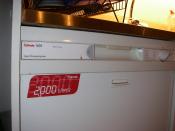The year 2000 computer issue is defined by Zetlin (1998) as "the result of a universal programming standard that records dates as six digits rather than eight, using only two digits for the year. Software that uses two-digit year fields (that is, almost all of it) will understand the year 2000 as "00" if the problem is not corrected in time" (pg. 1).
The medical industry as a whole will approach year 2000 with months of new system implementations and developing contingency plans to deal with problems associated with Y2K. Medical manufacturers must pay close attention to the way medical facilities plan for Y2K. The variances in facilities ordering patterns due to Y2K could affect the medical manufacturer's forecasts and inventory levels leading to a shortage of supplies. Also computer system compliance issues could result in loss of medical records or critical medical equipment failure. Manufacturers typically use historical usage to forecast for the coming year.
However, with potential changes in ordering patterns, some adjustments may be necessary to meet customers' needs. In addition, computer systems must be Y2K compliant to ensure Electronic Data Interface (EDI) which is used to exchanges computer data will function properly and patients health will not be at risk. For the purpose of this study, I have created a fictitious medical supply manufacturer, Equiptek Industries, which will be located in the eastern part of the United States.
BackgroundMedical facilities across the United States are concerned with critical date sensitive medical devices and products availability as January 1, 2000 approaches. Hospital concerns include issues such as the scheduling of elective procedures and supply issues with manufactures. Elective procedures are medical procedures that are non-emergency and can, if necessary, be postponed. Laura Bruce (1999) states "Have extra staff on hand and don't schedule elective surgeries. That's...


